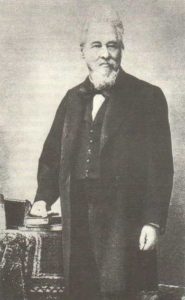
Norbert Rillieux
*This date marks the birth of Norbert Rillieux in 1806. He was a Black inventor and engineer.
Rillieux was born into an aristocratic Creole family in New Orleans. He was the son of Vincent Rillieux, a white plantation owner, engineer, and inventor, and his placée, Constance Vivant, a Free Person of Color. As a Creole, Norbert had access to education and privileges not available to lower-status Blacks or slaves. After studying engineering at Frances L’École Centrale, Rillieux became the school’s youngest instructor in the applied mechanics department. Rillieux had begun developing a method for refining sugar into crystallized granules between 1834 and 1843. He published many papers on steam technology.
Rillieux returned to Louisiana in 1840 and, three years later, patented the multiple-effect vacuum pan evaporator. This device heated the sugar cane juice in a partial vacuum, reducing its boiling point and allowing greater fuel efficiency. The concept for Rillieux’s evaporation process is a multiple-effect operation in which a series of vacuum pans heat one another in sequence, thus controlling the overall temperature and producing the desired crystallized form. The importance of Rillieux’s invention to the American sugar-making industry cannot be overstated.
This innovation, adopted in sugar refining, escalated production, reduced the price, and transformed sugar into a household item. Similar technology was subsequently developed for soap, gelatin, and glue production. Some have called Rillieux’s evaporator one of the greatest inventions in the history of American chemical engineering. When post-Reconstruction conditions proved oppressive in Louisiana for Blacks, Rillieux returned to Paris, serving as headmaster at L’École Centrale. He began to study Egyptology and helped decipher hieroglyphics.
In 1881, at 75, Rillieux made one last foray into sugar evaporation, devising a way to use his multiple-effect evaporation system to extract sugar from sugar beets. Rillieux's process fixed the errors in the previous process, but Rillieux lost the rights to the patent he had filed.
Norbert Rillieux died in poverty on October 8, 1894, at the age of 88. He is buried in the Père Lachaise Cemetery in Paris. His wife, Emily Cuckow, died in 1912 and is buried beside him.
Created Equal The Lives and Ideas of Black American Innovators
By James Michael Brodie
Copyright 1993, by Bill Adler Books, Inc.
William Morrow and Co. Inc., New York
ISBN 0-688-11536-5